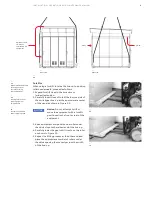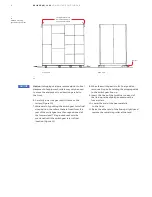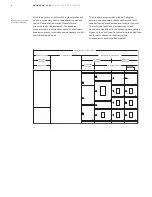
22
I N S TA L L AT I O N , O P ER AT I O N S A N D M A I N T EN A N C E M A N UA L
Figure 31 illustrates an auxiliary/transition
compartment with switchgear-type relays mounted
in semi-flush draw-out cases installed on the
compartment door. Space in the compartment has
been used for power management components
and other control devices.
Bus area
The bus area, Figure 32, contains the main
horizontal bus and vertical riser bus bars for the
particular section. The vertical bus bars are
supported at the breaker run-ins which are bolted
to the molded bases that form the rear wall of the
breaker compartment. The horizontal bus bars are
supported by the power connectors which are
bolted to the vertical bus bars. All bolted supports
and connections are accessible from the rear for
maintenance. The bus area is fully isolated from the
breaker, instrument and auxiliary compartments by
the molded bases or glass polyester sheet.
1. Enclosed fuse block
2. Open fuse block
1. Vertical riser bus
2. Run-ins to breaker compartment
3. Molded base
4. Run-backs from breaker compartment
5. Short-circuit brace
1. Power supply
2. Relays in draw-out cases
3. Auxiliary relays
4. Fuse blocks
5. Compartment door
—
30
Auxiliary/transition
compartment
(primary and secondary
circuit fusing)
—
30
—
31
—
31
Auxiliary/transition
compartment
—
32
—
32
Bus construction
1
2
1
1
2
4
3
5
2
3
5
4
















































